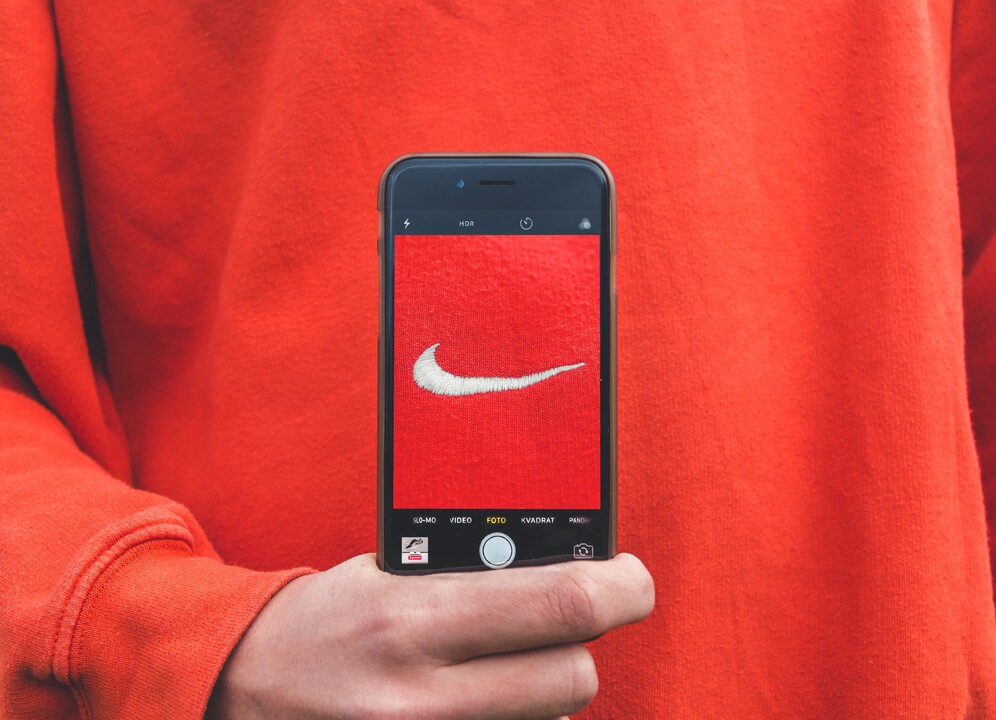Shein is one of the largest fashion companies in the world that not many have heard of. Amongst the many illuminating facts about Shein that this article from Rest of The World uncovers, one stands out: In June 2021, Shein accounted for 28% of all fast fashion sales in the US. This is almost as much as the combined sales of H&M and Zara together in that period. Digest that.

A Chinese technology platform that aggregates textile manufactures in China, beat iconic fashion brands H&M and Zara in sales in the United States. That’s a stunning fact.
If you frequently purchase from Amazon (and you do, of course), you may or may not have heard of Solimo, the top selling seller on Amazon. It is a brand that sells a range of houseware products on Amazon. But chances are that you’ve never seen an ad, or visited their website, or even see Solimo’s logo.
Here’s the logo:

And here’s their website. Solimo is an Amazon brand. It is possibly the first “data” created brand. There are / were others – AmazonBasics, Amazon Elements and more.
Amazon has unprecedented data and insights into what products consumers are searching for at any given time. This data gets converted to a demand pipeline, that feeds low-cost manufacturing setups in places like China and India. The products are manufactured, inventories are created and published on Amazon. The next time a consumer does the same search, lo behold – it will be available for sale. Shein operates in a similar manner. Both operate on a C2M (consumer-to-manufacture) Model. More on this shortly.
D2C: The first wave of disruption in traditional ways of Brand Building
The idea of how and why to build a brand is being redefined. Traditionally, companies have relied on two fundamental things to build brands:
- Creative, compelling communication – imagery, copy; the domain of “concepts”, “ideas” and “visualisation”
- Significant access to mainstream media platforms to distribute this communication to consumers – the domain of of Print and TV platforms
Internet and Social media platforms have disrupted both of these core fundamentals, altering the idea of brands along the way. The best copywriters and the most creative designers are not locked in leviathan organisations anymore. We’re transitioning to web3, and decentralisation has become the mode of default operation for a new generation of creators. Today, both the ability to create compelling communication and mainstream access to distribute this communication are accessible to practically anyone, down to an individual.
The Dollar Shave Club is one of the earliest and most well known example of a product that represent this paradigm shift in brand building. It launched itself using a single YouTube video shot by the founder to promote their unique product and business model. It was a phenomenon. A 107 second piece of video content published on a free-to-use video sharing platform shattered one of the biggest monopolies in consumer markets at that time.
The video went viral, and was a pivotal factor in catapulting the company to instant fame and then significant fortune. The brand went on to surpass Gillette, the then undisputed market leader.
We are seeing a significant subversion in how (for certain segments)
- Companies reach out to prospective buyers
- Consumers discover and purchase products
Today, it is very easy for a new business to launch a brand. Mobile phones and tools like Canva are used to create compelling ads (graphics and videos) at no cost. Then leverage Facebook, Google, YouTube, LinkedIn, Twitter, IG, Tik-Tok to reach their desired demographic and show them the ads. And be able to track them once the user clicks on their ad and comes to their website to engage or purchase their product.
This is precisely the reason behind the rise of D2C brands. Like the Dollar Shave Club, other D2C brands are companies like Glossier, Warby Parker and Casper. They were created entirely within a digital ecosystem, even if the products they sold were physical products.
⏹️ By 2018, there was even a new term to define the visual framework within which technology companies were designing their brands – blanding!

D2C brands represent the first wave of digital disruption of brands. What the D2C brands did share with their predecessors was the intent and need to create a “brand”. They still felt the need to build an identity, a story, a character around their company, albeit done differently using the Internet.
China and C2M: The second wave of disruption for brands
The explosion of Chinese apps both within and beyond China is driving the second disruption. Tik-Tok unleashed the power of creators for every individual with a mobile camera. Creativity became subjective, as the most cringe-worthy videos found its niche segment in some part of the digital demographic. It empowered individual creators to easily build a loyal audience and become influencers. Thanks to the Covid-19 pandemic, it definitively accelerated the creator economy, powering business models like Patreon.
Today, top creators on apps like Reels and Tik-Tok have been signed by talent agencies and are selling consumer products (in health, beauty, fitness etc) endorsed and branded by the influencers.
👩🌾 Li Ziqi, a Chinese influencer is one of the most popular vlogger on YouTube. Her videos chronicle a simpler life in rural China, and focus on the well being and healthy upsides of such a lifestyle. She has a massive following both within China and internationally, and is rumoured to make $23mn in annual earnings (a fact she has denied) from advertising and selling food products. Several rural influencers and individuals have attempted spin-off content and found varying levels of success in selling from farm to table in China.
But influencer brands are merely the side effect of the creator economy. It has set in motion the reality of a C2M model as a viable, scalable way of running consumer businesses. And in doing so, has significantly devalued the traditional idea of branding.
What manufacturers realised with influencer marketing, is the ease with which it was possible to reach out to a paying audience. It unlocked the power of direct to consumer for them. Pinduoduo, a Chinese platform founded in 2015, jumped onto this trend kick-started by Li Ziqi. In 2018, it launched a “1,000 New Brand Initiative’. The stated intent of this was to:
“…support 1,000 factories and manufacturers in developing their own brands and help these companies transform from OEM (Original Equipped Manufacturer) to OBM (Original Brand Manufacturer). The campaign enables small and medium-sized manufacturers to reach Pinduoduo’s 443 million users and upgrade their brands at a lower cost. The platform provides big data analytics on consumers’ needs and comprehensive R&D planning on products.”
The note is telling. It highlights three key points about brand building today:
- Manufacturers becoming brands
- Direct access to end consumers
- Use of big data
Jiaweshi is a Chinese manufacturer of branded consumer goods for companies like Philips and Whirlpool. As part of Pinduoduo’s initiative, they launched their line of robot vacuum cleaners with direct access to Pinduoduo’s massive consumer audience. It was a success, and with direct consumer feedback, they were able to make improvements in their product, making changes to its appearance, and optimising the robot’s cleaning route.
Sanhe is one of the biggest manufacturers of European cookware. With tremendous data guidance from the Pinduoduo platform, it was able to customise its product line for the local market, providing the same quality and craftsmanship as it did to the export line for Europe.
Today, Pinduoduo has became an online agriculture marketplace which, according to its website, connects 16 million farmers with consumers directly.
Shein achieved the same within the fashion and apparel industry, becoming a Pinduoduo-like platform to connect local textile manufacturers with global consumers.
This direct connect with the consumer is a tectonic shift in branding, and therefore in advertising and marketing. The traditional approach of “creating a brand” has become redundant in large swathes of consumer transactions today. AI and big data-driven vertical platforms are working with original manufacturers of products – be it influencers, home run shops, or small and medium entrepreneurs – to drive consistent sales, and in the process are by-passing the need to create a brand for them.
#️⃣ Try #factory on Tik-Tok, and you will be flooded with video recordings of Chinese manufacturing companies sharing various parts of their manufacturing processes with consumers. The monotonous activity of machines gain a viral quality when recorded for the short video format. The creators and manufactures are unknown, often sharing on arcane handles and usernames. The viewers, and prospective customers, don’t seem to care.
The economies of scale these platforms provide by eliminating inefficient middle layers optimise product costs to such an extent, that the users are willing to purchase a variety of product categories from these platforms even if the brand is unknown. The sheer economic efficiency of technology is squeezing the idea of brands out of the consumer psyche.
This is a significant trend in China, which is a price sensitive market. But it is unlikely to be limited there. As platforms across the world continue to aggregate demand and supply in different segments, companies will take a hard look at their branding budgets. Their challenge will be to find innovative ideas in which technology can be leveraged to build brands in ways never imagined before, while this technology may unflinchingly diminish the old ways in which brands were created.
I will leave you with Cadbury’s ad campaign with Shah Rukh Khan, to imagine the new possibilities ahead of us: a stunning example of building a brand using the same technology that could have threatened it.



